
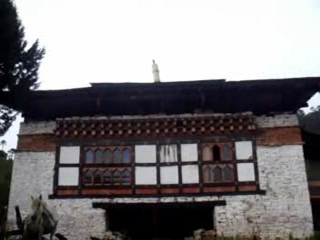
The first Temple built in 1955
Wangthang Gonpa was initially founded by the Disciple of Dzogchen master Rigzin Jigme Lingpa (1729-1798), Monla Jigme Kundrol, who was also the founder of Dungsam Yongla Gonpa in Eastern Bhutan. Monla Jigme Kundrol reached Wangthang in search of a place that was prophesied by his master. Believing it to be true, he meditated here for years and later Khandro Dechen Gyalmo appeared before him and pointed towards a main spot and instructed him to go there. Arriving at the place where indicated by the deity, known as Dungsam Yongla. Wangthang is also visited and blessed by Drupthop Melong Dorje. About half-an-hour walk further up from the Gonpa is the meditation cave of Drubthop Melong Dorje.
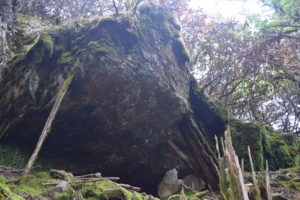
MELONG DORJE’S CAVE
It is said that this meditation cave was discovered by Wangthang Rinpoche in his pure vision while he was on the way to find herbals to make blessed medicine (Mendrub) to use during Drubchen by saying, “Me nang gu nang chi yang nang, Me shar gu shar chi yang shar.” (མི་སྣང་གུ་སྣང་ཅི་ཡང་སྣང་། མི་ཤར་གུ་ཤར་ཅི་ཡང་ཤར།) “When wished of invisible, anything can be visible. When wished of disappear, anything can be appeared”. Later lead by Rinpoche himself, group of people reached at the place where Rinpoche spot the cave in his vision. His Holiness the 7th Namkhai Nyingpo Rinpoche also visited at Wangthang Gonpa in 1997 and performed the Dechen Zhingdrup. In earlier times, The Shamar Rinpoche was travelling to eastern Bhutan via Wangthangla. There is stone throne of Shamar Rinpoche on the way towards nearby stupa. Hence this stone throne is commonly called Karmapa’s throne. According to some sources, previous temple was completely destroyed by fire. The present one-storied small temple was rebuilt wonderfully and expanded by Tulku Yeshi Dorje (Wangthang Rinpoche), Sonam Chödrak Acho Rinpoche (Rinpoche’s brother) and the general public in 1955 at the request of general public of Ura.
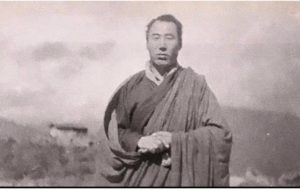
Wangthang Rinpoche Tulku Yeshe Dorji
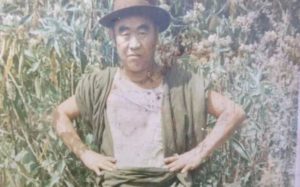
Acho Rinpoche Sonam Chodra
Rinpoche completed his three years retreat in Wangthang and blessed the whole area. All the people of Ura rejoiced and became the patrons of Wangthang Rinpoche. On completion, Rinpoche along with His Eminence Bero Rinpoche, Tang Chöjam Rinpoche, Mani Lama and many other monks and Gomchens performed the Drubchen on Thugje Chenpo Dukngal Rangdrol (Natural Liberation of Suffering) where more than hundreds of devotees gathered from Tsakaling, Tsamang, Chali and many other different districts. Later, at the request of Dasho Nidup Namgyel and general villagers of Ura, Rinpoche decided to establish a monastery for the beneficial of all beings and established a Gomde (spiritual Community) and meditation place ( Retreat Centre) for the practitioners. A two-store Tshepame (Amitayus) temple was built too. the monastery was inaugurated with thirty Gomchens (hermit) and engaged in the practice of Longchen Nyingthig. Under the guidance and supervision of Rinpoche, the construction of Tshepame Lhakhang (Amitayus temple) began in 1971 and was successfully completed in 1975. The consecration ceremony was held by Venerable Khenpo Dazer and it has been witnessed with various special signs and significances by all the devotees gathered. Since then, Wangthang Gonpa was well-known and Rinpoche became the first Wangthang Rinpoche in the history.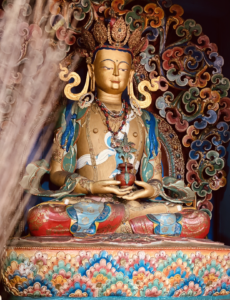
![]() A life-size statue of Tshepame (Amitayus) made from medical clay is the main inner objects of worship in the temple, followed by Guru Rinpoche in the form of Glorious Subjugator of Appearance and Existence (guru snang srid gzil gnon), Jetsün Dolma (Green Tara) and other small statues. All the statues were filled with precious retention mantras and holy relics. A life-sized replica of Amitayus which stands in Lhakhang is considered to be very sacred, as same as Lhasa Jowo Shakyamuni of Tibet. The paintings on the walls depict Buddhas of Jangchub Tungshag, (Buddhas of Confession Prayer) Zhitho (“Hundred Peaceful and Wrathful Deities”) and so many deities are painted. Rinpoche conceptualized all the temple design and the wall paintings. In the similar manner, objects of offering such as dharma instruments, bowls (cups for offering water) and butter lamps made of silver and dharma scriptures have been newly installed.
A life-size statue of Tshepame (Amitayus) made from medical clay is the main inner objects of worship in the temple, followed by Guru Rinpoche in the form of Glorious Subjugator of Appearance and Existence (guru snang srid gzil gnon), Jetsün Dolma (Green Tara) and other small statues. All the statues were filled with precious retention mantras and holy relics. A life-sized replica of Amitayus which stands in Lhakhang is considered to be very sacred, as same as Lhasa Jowo Shakyamuni of Tibet. The paintings on the walls depict Buddhas of Jangchub Tungshag, (Buddhas of Confession Prayer) Zhitho (“Hundred Peaceful and Wrathful Deities”) and so many deities are painted. Rinpoche conceptualized all the temple design and the wall paintings. In the similar manner, objects of offering such as dharma instruments, bowls (cups for offering water) and butter lamps made of silver and dharma scriptures have been newly installed. 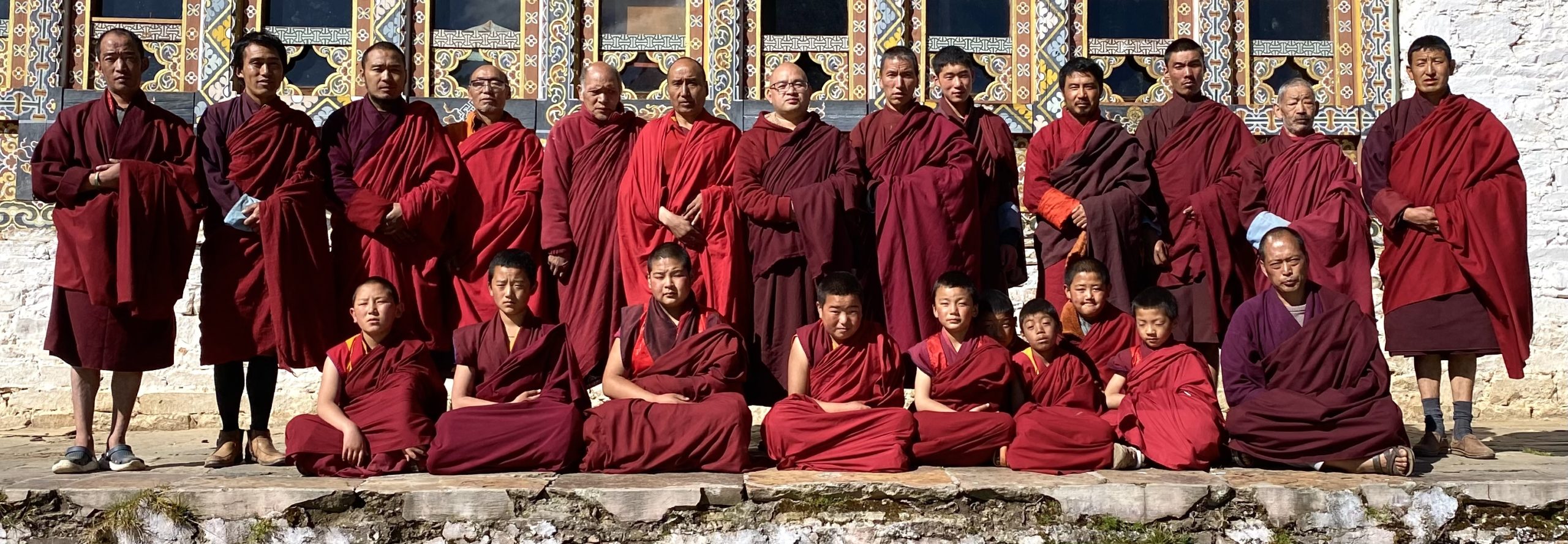
At present, there are a total of 35 Gomchens and they have barely enough to manage. Almost everything is dependent on donations and charity received from outsiders and sometimes had to rely on contributions amongst villagers themselves
